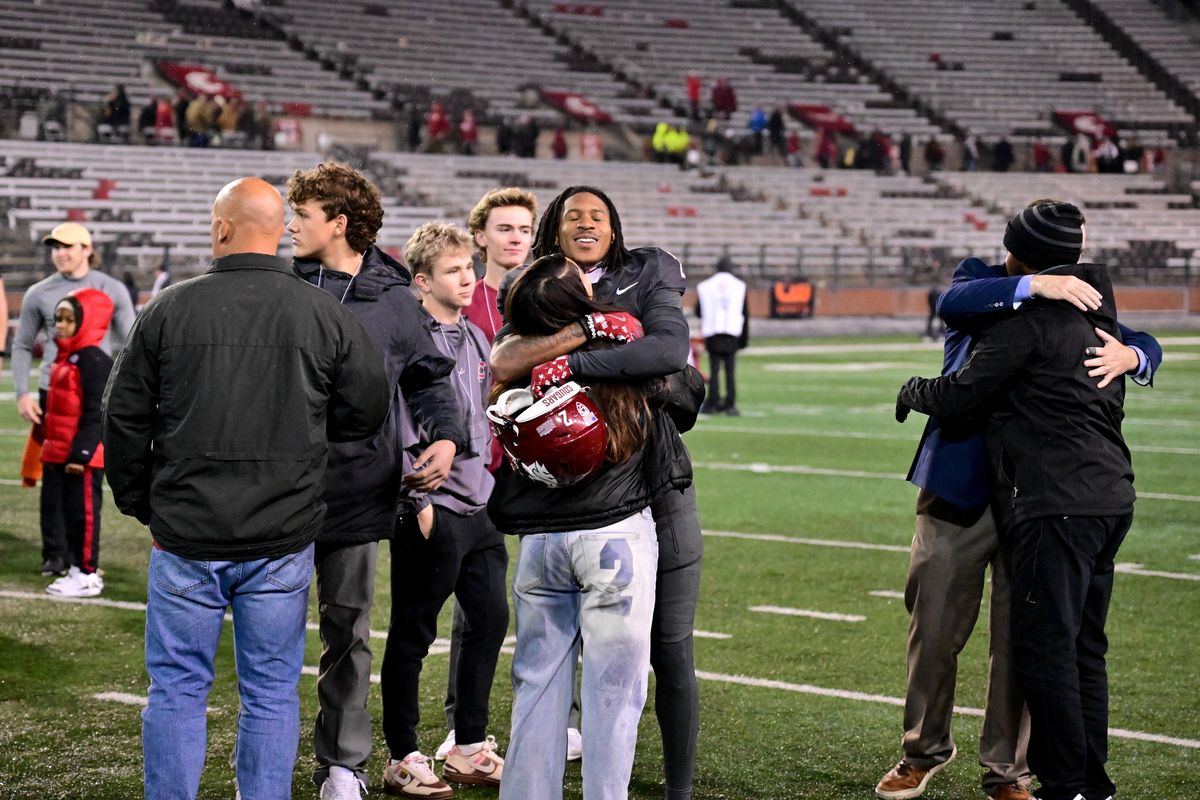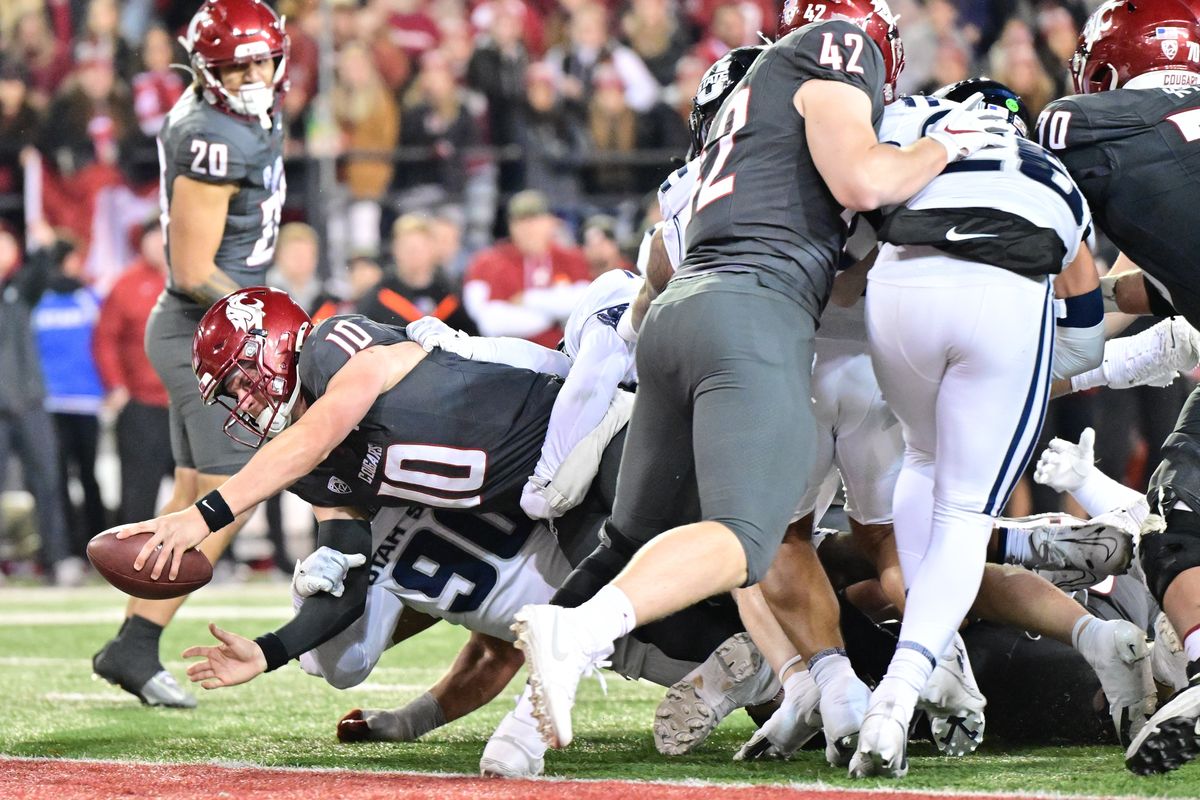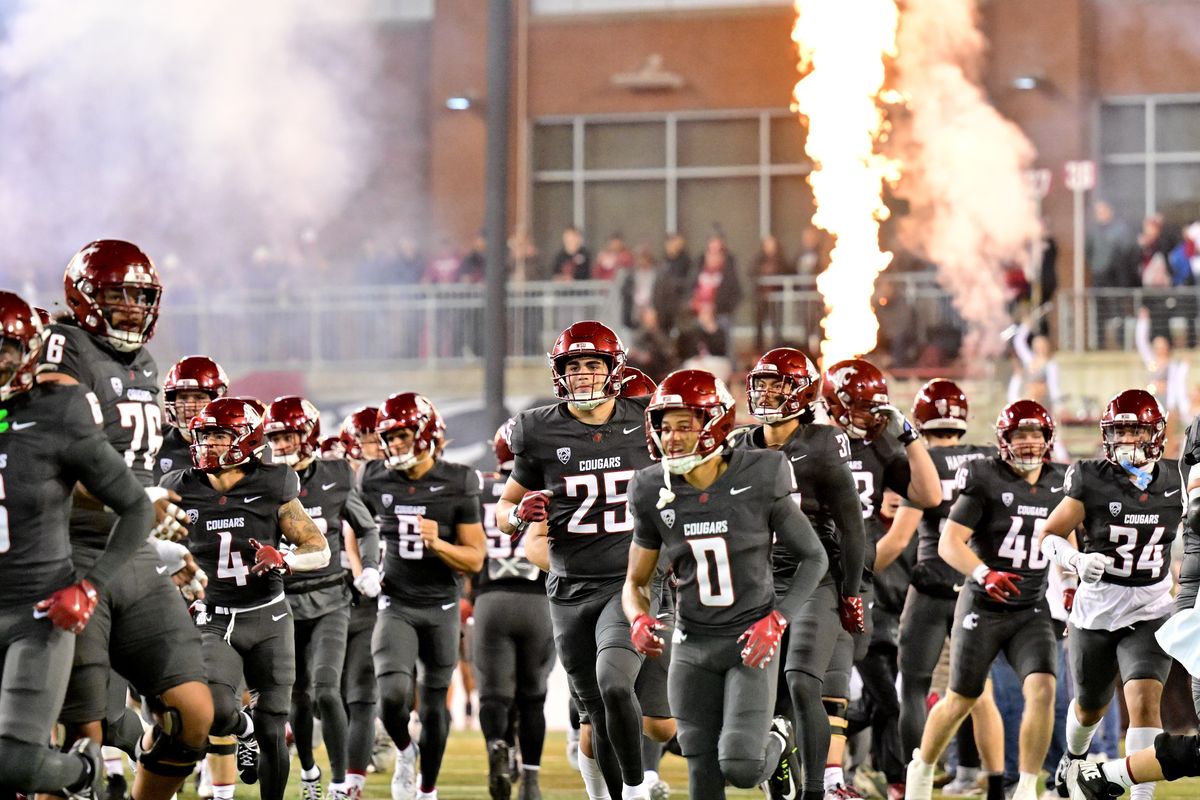Analysis: In win over Utah State, WSU’s secondary stepped up again, keeping up an important trend

PULLMAN — Not long into Washington State’s blowout win over Utah State on Saturday evening, John Mateer noticed something about the Aggies’ defense: They were showing light boxes, giving the Cougars chances to gash them on the ground. It matched up with what Mateer and his offense saw on paper, which was that USU’s defense was yielding some of the most rushing yards in the nation.
So in a 49-28 win, WSU took advantage. True freshman running back Wayshawn Parker totaled 149 rushing yards and two touchdowns, fellow running backs Leo Pulalasi and Djouvensky Schlenbaker posted 62 and 26 yards, respectively, Mateer tallied 38 yards and even senior receiver Kyle Williams added 14 yards on the ground.
“And then the linemen and the running backs are just playing hard,” Mateer said, “and that’s why we were able to do it.”
The Cougars have often struggled to generate a consistent rushing attack, so they deserve gobs of credit for turning in this kind of ground game, especially doing so in the third quarter to snap out of the lulls that have usually plagued them in that frame. That kind of thing matters, particularly for a program that has long prided itself on the Air Raid offense.
But what WSU really deserves credit for was its pass defense. Entering Saturday’s game, veteran quarterback Spencer Petras and Utah State had submitted the following few passing totals: 194, 360, 461, 372, 293. The Aggies are not a compelling bunch because their defense has so many holes, but their passing attack has done its part to make up for it, torching defenses with an up-tempo, multidimensional approach.
Petras managed only 208 passing yards in Saturday’s game. He completed 28 of 45 passes for two touchdowns and one interception, which came courtesy of WSU nickelback Kapena Gushiken, who drifted backward to pick off a pass near the end zone toward the end of the first half. Gushiken also recorded two pass breakups, and four Cougars registered one apiece: Cornerbacks Ethan O’Connor and Jamorri Colson, plus safety Jackson Lataimua.
For WSU’s secondary, It’s the latest installment of several steps in the right direction. About a month ago, after the Cougs took what stands as their only loss of the season, they were giving up an average of 292 passing yards per game, No. 127 of 133 FBS teams. They were doing well to limit points, but opposing quarterbacks could usually rely on having their way against the Cougars’ secondary.
Over these last three games, that has changed in a huge way. Hawaii Brayden Schaeger, one of the most decorated active quarterbacks nationally, logged only 196 passing yards against WSU. San Diego State signal-caller Danny O’Neil may be a freshman, but he could muster just 195 against the Cougars, and now the sixth-year quarterback Petras came up with 208.
Among the many trends that have emerged across the last two months of this WSU season, this ranks among the most encouraging for the Cougs. They’re limiting big plays — USU completed just three passing plays of 15-plus yards, and none more than 30 yards, which has been the case for two of WSU’s past three opponents — and they’re piling up more and more deflections.
Washington State Cougars quarterback John Mateer (10) dives for a touchdown against the Utah State Aggies during the second half of a college football game on Saturday, Nov. 9, 2024, at Gesa Field in Pullman, Wash. WSU won the game 49-28. (Tyler Tjomsland/The Spokesman-Review)
At the heart of that effort, though, is the Cougars’ pass rush. In Saturday’s game, WSU defensive tackle David Gusta generated a sack, the first of his career. That doesn’t tell the whole story, far from it. Entering this one, he had pocketed 18 pressures, second-most on the team. He’s supplied consistent pressure, and on the interior of the Cougs’ defensive line, that has often been in short supply.
WSU put up four other quarterback hurries to top USU: One apiece from edges Nusi Malani, Andrew Edson and Isaac Terrell and one from tackle Ansel Din-Mbuh, a nice encore from his three-sack outing against San Diego State. With how quickly the Aggies like to get the ball out, sacking Petras was always going to be a tall task, but the Cougars quietly changed the game by bothering Petras often enough to throw him off a bit.
WSU’s pass rush was all but invisible for the first several games of this season. The Cougars have solved that issue in a credible way, which has unlocked another dimension to their defense, which in turn keeps supplying takeaways — including two in Saturday’s game. It’s the kind of trend that portends a fruitful postseason, whether a prestigious bowl game or a spot in the College Football Playoff, long as those odds may be.
“I thought we finally got to the quarterback a little bit towards the end and got him rattled and got some big fourth-down stops,” WSU coach Jake Dickert said. “I would love to see them go out there and close the door maybe a little bit more firmly, but that’ll bring us back to work on Monday, ready to go.”
The Cougs’ defensive showing was anything but spotless, though. In the final minute of the game, they allowed running back Derrick Jameson — who spent the last two years at Iowa Central Community College, where he did not appear in a game — to break off a 72-yard touchdown rush on his first touch of his career. WSU may have inserted many of its backups, but there’s no excusing a lapse like that, garbage time or not.
The Aggies also used a formation the Cougs knew to expect, a look with four receivers lined up around each other on the left side, to score a short passing touchdown in the first quarter, tying the game. WSU safety Adrian Wilson got lost in the shuffle and Jack Hestera beat him to the goal line.
Perhaps most important, though, the Cougars needed this to be a waxing. To make the most of whatever chance they have of making the 12-team CFP field, they didn’t just need to win these last four regular-season games — they needed to blow teams out, showing the committee their middling strength of schedule belies what they’re capable of. Allowing 28 points to Utah State won’t do much to help on that front.
But WSU still has three more chances to do so: At New Mexico on Nov. 16, at Oregon State on Nov. 23 and home against Wyoming on Nov. 30. The Cougs will need to win all three and put up some crooked numbers. Step one will be limiting those clubs’ passing attack, and if the Cougs’ outing on Saturday was any indication, they’re on the right track.






























































